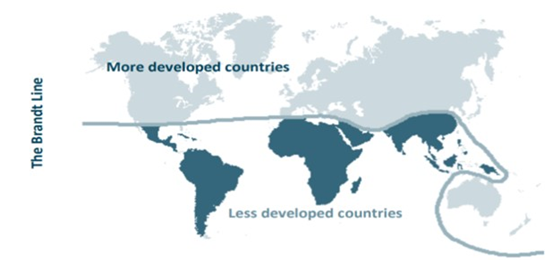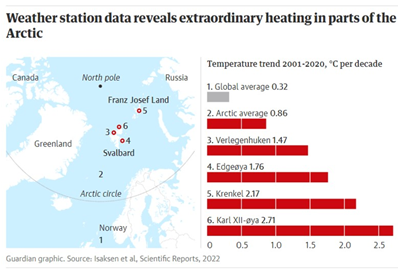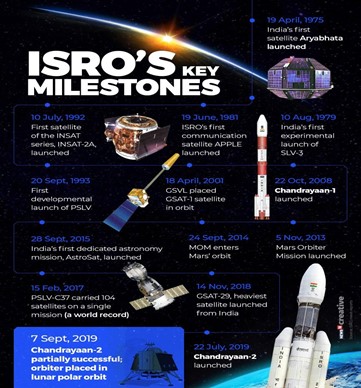10 Feb
Changing population dynamics and associated concerns
- In news: World population to hit 8 bn, India to cross China to become most populous nation in 2023 as per United Nation’s World Population Prospects 2022 (WPP) report.

Background:
-
- As per UN world’s population has reached 8 billion on November 2022.
- It attributed the rise in population to a gradual increase in human lifespan due to improvements in public health, nutrition, personal hygiene, and medicine and due to improved fertility levels.
- Population growing at slower pace: In 2020, the global growth rate fell under 1% per year for the first time since 1950.
- As per UN it took 12 years for the global population to go from 7 billion to 8 billion, it will take around 15 years until 2037 for it to reach 9 billion. Its latest projections further stated that the world population could grow to nearly 8.5 billion in 2030, 9.7 billion in 2050, and 10.4 billion in 2100.
- In 2021, the average fertility of the world’s population stood at 2.3 births per woman over a lifetime and projected to decline further to 2.1 by 2050.
- The global life expectancy at birth has increased by 9 years between 1990 and 2019 to reach 72.8 years. However, this number fell to 71 years in 2021 as a result of the COVID-19 pandemic.
- Regional variations: Growth and distribution of world population:
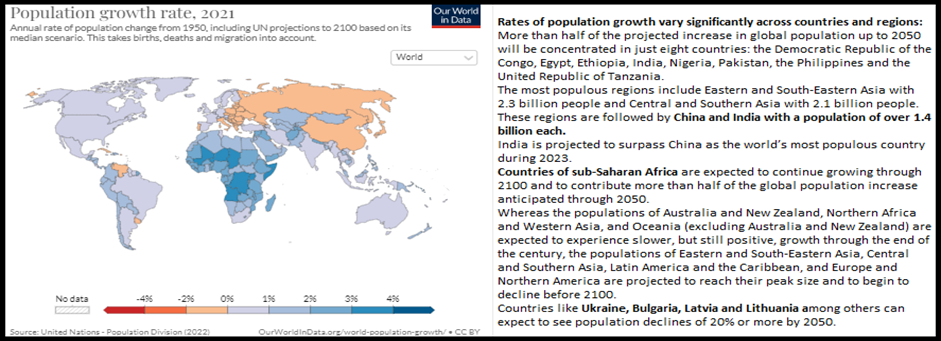
- Demographic attributes around the world:
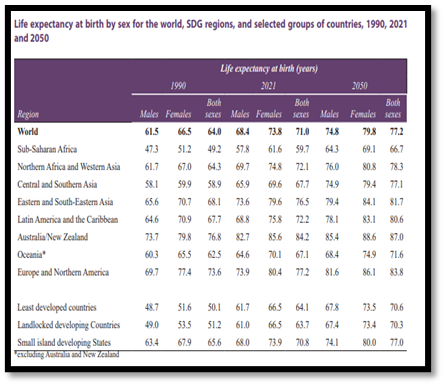
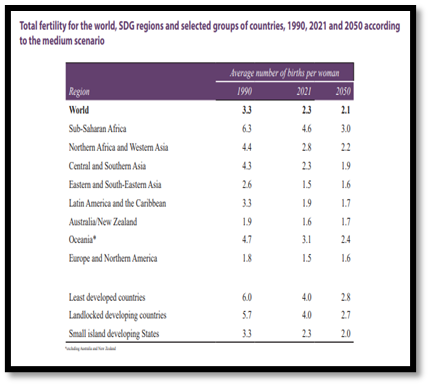
- India’ changing demographic structure:
- At the third stage of the demographic transition, and experiencing a slowing growth rate, India has 17.5% of the world’s population.
- As per the latest WPP, India will reach 150 crore by 2030 and 166 crore by 2050. Population stability is expected to be achieved no later than 2064 and is projected to be at 170.
- Life expectancy at birth was 70 years in 2019.
- The infant mortality rate declined to 27 in 2020. The under-five mortality rate fell to 41, and the maternal mortality ratio dropped to 103 in 2019.
- India reached a significant demographic milestone as its TFR slipped to 2, below the replacement level fertility (2.1), as per the NFHS.
- However, even after reaching the replacement level of fertility, the population will continue to grow for three to four decades owing to the population momentum.
- The disease pattern in the country has also seen a tremendous shift in these 75 years: there has been a transition towards non-communicable diseases (NCDs), the cause of more than 62% of total deaths.
- As per WPP 2022, India will have one of the largest workforces globally, i.e., in the next 25 years, one in five working-age group persons will be living in India.
- However, there are several obstacles to harnessing this demographic dividend:
- Gender disparity in workforce: India’s labour force is constrained by the absence of women from the workforce; only a fourth of women are employed.
- Skill gaps: country’s workforce lacks the basic skills required for the modernised job market.
- One of the world’s lowest employment rates is another enormous hurdle in reaping the ‘demographic dividend’.
- India’s health-care infrastructure is highly inadequate and inefficient.
- As the Indian population gradually surpasses China, India should work towards enhancing the lives of its current and future citizens and address challenges plaguing its economy. Demographic dividend needs to be strengthened, for which India must invest in the education and health of its workforce.
- Changing dynamics of world population:


- Concerns associated:
- Vicious cycle of population growth and poverty- Rapid growth of a country’s population can exacerbate the challenge of eradicating poverty (SDG 1), potentially trapping communities in a vicious cycle: while economic growth may struggle to keep pace with population growth, poverty can deprive individuals of opportunities and choices, limiting their ability to control their fertility, perpetuating high levels of childbearing often starting early in life and ensuring the continued rapid growth of the population.
Case study: In Madagascar, the population has been growing at a rate of about 3 per cent per year for several decades. The country remains one of the poorest countries in the world, with more than 70 per cent of its people living below the international poverty line.
-
- Resource-population mismatch- Countries where fertility levels remain high should prepare to meet the needs of growing numbers of children and young people: Many countries are projected to double in population between 2022 and 2050, putting additional pressure on resources and posing challenges to the achievement of the UN’s Sustainable Development Goals (SDGs).
-
- Compromised social well being: Expanding educational opportunities and ensuring quality education for all can be particularly challenging for low- and lower-middle income countries with growing cohorts of children and youth.
Example: In sub-Saharan Africa, the completion rate of upper secondary education increased only 3.4 percentage points, from 23.3 per cent to 26.7 per cent, during the past decade, leaving that region furthest behind.
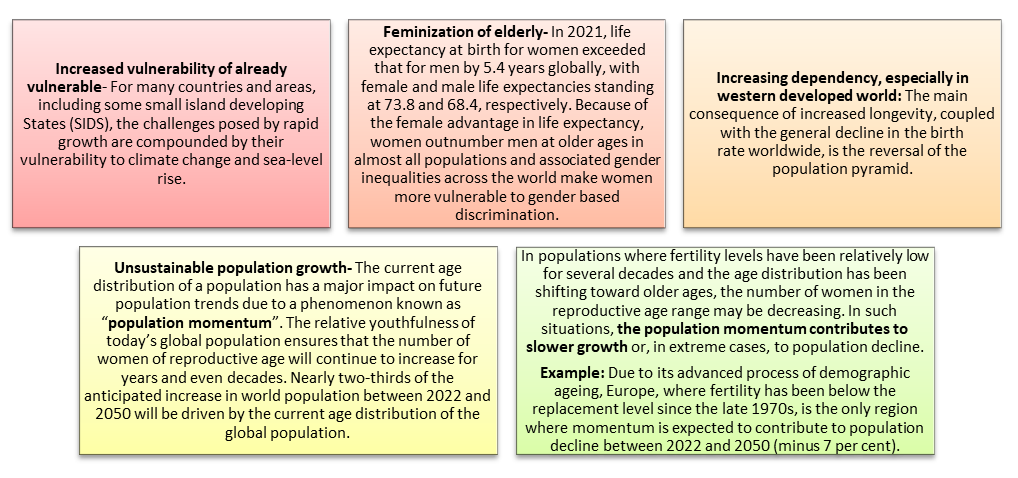
-
- If the present growth trends in world population, industrialization, pollution, food production, and resource depletion continue unchanged, the limits to growth on this planet will be reached sometime within the next one hundred years. The most probable result will be a rather sudden and uncontrollable decline in both population and industrial capacity.
- Opportunity associated with growing population:
- Youthful age structure lead to overall dependency ratios fall, making more resources available to increase investments in education, health, employment, social protection, pension schemes, etc., thereby fostering short and medium-term economic growth and well-being.
- Countries that are still at an early stage of the demographic transition have an opportunity to maximize the benefits of the dividend by investing in human capital formation.
- A sustained drop in fertility leads to an increased concentration of the population at working ages, creating an opportunity for accelerated economic growth per capita.
- In most countries of sub-Saharan Africa, as well as in parts of Asia and Latin America and the Caribbean, the share of population at working ages (between 25 and 64 years) has been increasing in recent times. This shift in the age distribution provides a time-bound opportunity for accelerated economic growth known as the “demographic dividend”.
- Impact of covid pandemic on population dynamics of the world
The COVID-19 pandemic has affected all components of population change, including fertility, mortality and migration:
-
- Global life expectancy at birth fell to 71.0 years in 2021, down from 72.8 in 2019, due mostly to the impact of the coronavirus disease (COVID-19) pandemic.
- The COVID-19 pandemic severely restricted all forms of human mobility, including international migration.
- The COVID-19 pandemic has exacerbated longstanding inequalities in access to quality education, negatively affecting the learning and well-being of millions of children and youth worldwide. As a result, past increases in school completion rates may slow or even reverse depending on the duration of full or partial school closures.
- Way forward:
- Need to invest in the further development of their human capital by ensuring access to health care and quality education at all ages and by promoting opportunities for productive employment and decent work.
- Countries with ageing populations should take steps to adapt public programmes to the growing proportion of older persons, including by improving the sustainability of social security and pension systems and by establishing universal health care and long-term care systems.
- Promoting life-long learning and silver economy: A system of manufacturing, distributing, and consuming goods and services known as the "Silver Economy" makes advantage of the purchasing power of older and more senior individuals to satisfy their demands for consumption, housing, and healthcare.

Case study: Case Study of Active Aging through Lifelong Learning in South Korea
Evening schools in Korea are non-formal schools outside the public education system to provide education to middle age and older youths. Since the 2000s, the number of older adult learners has increased, with adults in their 50s and older accounting for the majority (71.7%) of evening school students. As of 2020, there were 45 evening schools in Korea, and the average number of students per institution was 56.
- All countries should take actions to tackle climate change and protect the environment, more developed countries—whose per capita consumption of material resources is generally the highest—bear the greatest responsibility for implementing strategies to decouple human economic activity from environmental degradation.
- Ensuring that individuals, in particular women, have the ability to decide the number of children that they will have and the timing of their births can markedly improve well-being and help to disrupt intergenerational cycles of poverty.
Arsene Dumont established a connection between upward “social mobility” and low fertility. According to his idea of social capillarity, in a modern society, the smaller the size of one's family, the higher one's social climbing opportunities. Similarly JS Mill held that population control was essential for improving the standard of living and was an active supporter of birth control to curb population growth. Thus, to end poverty and hunger, achieve the SDGs related to health, education and access to decent work, sustainable population growth is the key.
Where can we use it:
- Geography optional- paper1 (Growth and distribution of world population; Demographic attributes, world population problems and policies) and paper2 (Demographic attributes).
- GS: paper1 (Population and Associated Issues).
Sources:
https://www.thehindu.com/news/international/humanity-hits-the-eight-billion-mark/article66139348.ece#:~:text=projects%20the%20population%20to%20continue,%2C%20however%2C%20calculated%20different%20figures.
https://www.thehindu.com/news/international/china-population-shrinks-for-first-time-in-over-60-years/article66385397.ece
https://indianexpress.com/article/explained/worlds-population-touches-8-billion-how-india-is-placed-8270044/#:~:text=The%20world's%20population%20could%20grow,at%20that%20level%20until%202100.
https://indianexpress.com/article/explained/reading-un-population-report-8023378/
https://www.un.org/development/desa/pd/sites/www.un.org.development.desa.pd/files/wpp2022_summary_of_results.pdf
https://www.un.org/development/desa/pd/sites/www.un.org.development.desa.pd/files/wpp2022_summary_of_results.pdf
Indus Water treaty: prolonged pressure point in Indo-Pak relations
- In news: recently, India sent notice to Pakistan seeking modification of the 1960 Indus Waters Treaty is the fallout of a longstanding dispute over two hydroelectric power projects on the western rivers — the fully operational Kishenganga on the Jhelum, and Ratle on the Chenab.
- Background:
- The notice appears to be a fallout of a longstanding dispute over two hydroelectric power projects that India is constructing – one on the Kishanganga river, a tributary of Jhelum, and the other on the Chenab.
- Pakistan has raised objections to these projects, and dispute resolution mechanisms under the Treaty have been invoked multiple times. But a full resolution has not been reached.
- Under the treaty, along with the Indus, these two western rivers were allotted to Pakistan for its unrestricted use. India could use the waters of these rivers for “non-consumptive use”, including run-of-the river hydel projects. The Kishenganga was constructed after the Permanent Court of Arbitration in The Hague ruled in India’s favour. But Pakistan continues to object to this and the Ratle dam.
- India has sought to modify the treaty after Pakistan refused intergovernmental negotiations on the matter.
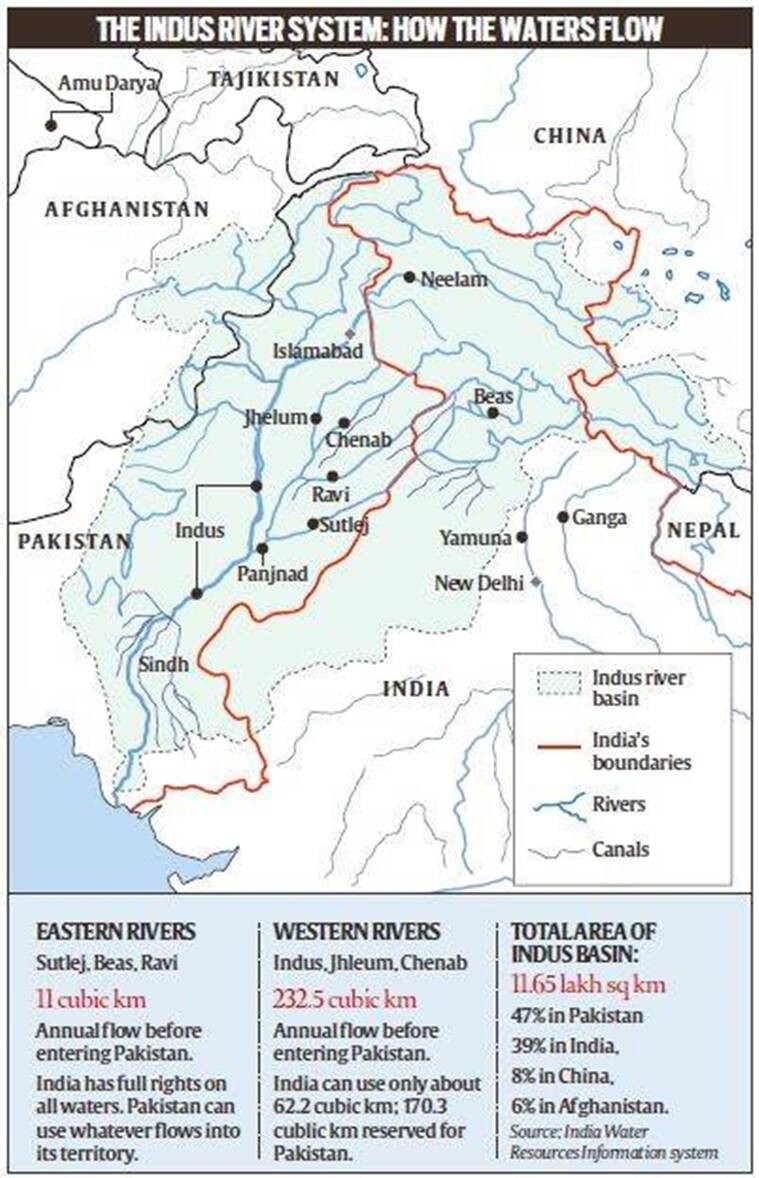
- About Indus water treaty:
- The Indus Waters Treaty (IWT) is a nearly 60-year-old water-distribution treaty that delimits the rights and obligations of India and Pakistan for the use of waters on the Indus Rivers, with the World Bank acting as its third-party guarantor.
- Under the Indus Waters Agreement signed between India and Pakistan in 1960, the waters of the eastern rivers (Ravi, Basin, Sutlej and its tributaries) in the Indus Water System were allocated to India.
- On the other hand, India has to maintain the water flow of the western rivers (Indus, Jhelum and Chenab and its tributaries) and these were allocated to Pakistan.
- The Kishanganga (Neelum) and Ratle hydropower projects in India’s Union Territory of Jammu and Kashmir are on these western rivers, which Pakistan has objected to.
- Why are the two countries dissatisfied by the treaty?
- From the Indian point of view, the basic dissatisfaction with the treaty arises from the fact that it prevents the country from building any storage systems on the western rivers. Even though the treaty lays out that under certain exceptional circumstances storage systems can be built, the complaint raised by India is that Pakistan deliberately stops any such effort due to the political rivalry it shares with India.
- The matter is further aggravated by the fact that the western rivers lie in the disputed region of Jammu and Kashmir, which has been a subject of tussle between the two countries since independence.
- Since the treaty’s conception in 1960, the two countries have been embroiled in conflicts over a number of projects including the Salal hydroelectric project on the Chenab, the Tulbul project, the Kishenganga and Ratle hydroelectric plants.
- The treaty is highly technical leading to far ranging divergences between the two countries in terms of interpretations.
- Added to this inherent limitation within the treaty is the political situation between the two countries, further aggravating geopolitical tensions in the region.
- Challenges associated with treaty:
- The Treaty is highly unbalanced:
- Despite IRB being a monolithic geographical entity, the IWT crudely divided the five rivers from East and Indus along the longitudes.
- It did not take into account that two of the rivers namely Indus and Sutlej originate in Tibet Autonomous Region of China, with its implications on availability of water in these rivers.
- The treaty does not take into account other rivers joining Indus from West like Kabul, which has bearing on availability of water in Indus.
- Allocation of water is interpreted differently: Both countries consider it unfair because Pakistan argues that its demand should have been considered based on traditional ‘Rights’ but India wants it to be interpreted on the basis of ‘Needs’.
- The Treaty has too many engineering provisions, which give Pakistan undue advantage to vet the designs of the Indian projects on Western Rivers.
- The Treaty is highly unbalanced:
Example: Kishenganga Hydroelectric Project is being resented and resisted by Pakistan at every international forum though India has met all conditions which were stipulated by the International Court of Arbitration.
- The Treaty does not cater for the changing social, economic, technical and environmental issues:

- Way forward:
- To achieve a stronger Indus Water Treaty, both states must shift from acting based on the rationality of water, and focus instead on its relationality. This means moving from water sharing (rationality) to benefit sharing (relationality). Rationality has a singular focus on volumetric allocation of water, and relationality expands the definition of water from surface water (water quantity), to water quality, preservation of wetlands and biodiversity, soil erosion, conjunctive use of ground and surface water, and nature based solutions.
- Both countries could also benefit from focusing more on a sub-basin level instead of managing the area with a singular holistic approach. Interventions at the sub-basin level that can account for contextual factors, such as the socio-economic composition of the area and the existing hydrology, would make the action more effective.
Where can we use it:
- Geography optional- paper2(International boundary of India and related issues).
- GS: GS2 (India and its Neighborhood- Relations).
Sources:
https://indianexpress.com/article/opinion/editorials/indus-waters-treaty-threatens-to-become-another-pressure-point-in-indo-pak-relations-8411581/
https://indianexpress.com/article/explained/india-pakistan-notice-indus-waters-treaty-8408109/
https://indianexpress.com/article/india/india-notice-pakistan-modification-of-indus-waters-treaty-8407267/
https://www.thehindu.com/news/national/what-is-indus-waters-treaty-between-india-pakistan/article65075002.ece
https://www.livemint.com/news/world/india-says-all-its-projects-fully-compliant-with-indus-water-treaty-11646352916360.html
https://www.downtoearth.org.in/news/water/here-is-why-india-has-given-notice-to-pakistan-for-amendment-of-the-indus-waters-treaty-87349
Bomb cyclone - Edukemy Current Affairs
Bomb cyclone:
A bomb cyclone is a large, intense midlatitude storm that has low pressure at its center, weather fronts and an array of associated weather, from blizzards to severe thunderstorms to heavy precipitation.
Bombogenesis, also known as bomb cyclone, occurs when a mid-latitude cyclone rapidly intensifies, or strengthens, over a 24 hour period. This intensification is represented by a drop in millibars, a measurement of pressure used in meteorology. The intensification required to classify as "bombogenesis" varies by latitude. At 60 degrees latitude, it is a drop of at least 24 millibars over 24 hours.
Bombogenesis can happen because storms in the midlatitudes draw their energy from large temperature contrasts, when a cold air mass collides with a warm air mass, such as air over warm ocean waters.
Kelp forests
Kelp forests: Kelp Forests are underwater ecosystems formed in shallow water by the dense growth of several different species known as kelps. Though they look very much like plants, kelps are actually extremely large brown algae. Some species can reach heights (underwater) of 150 feet (45 m), and under ideal physical conditions, kelp can grow 18 inches (45 cm) in a single day.
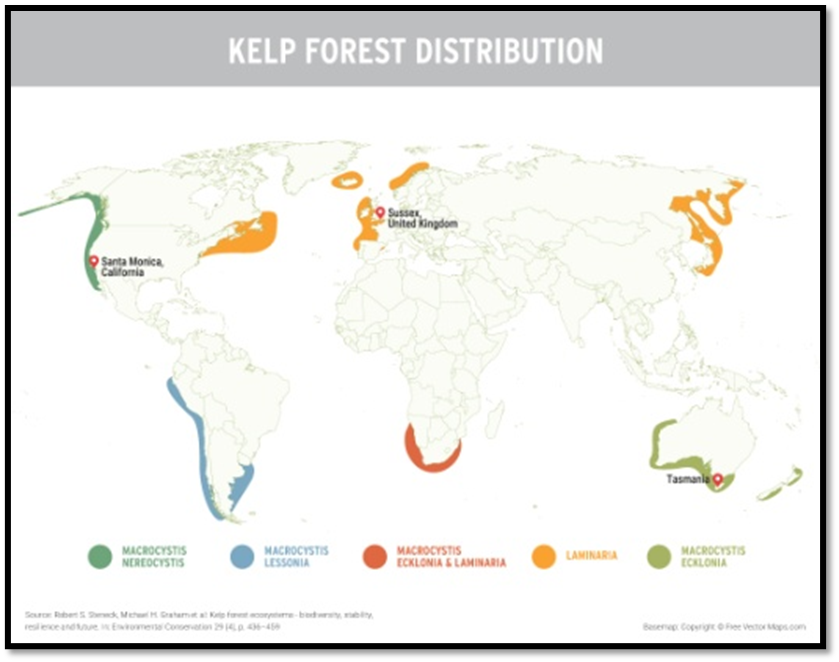
- Conditions required for growth: Kelp are large brown algae that live in cool waters close to the shore. These dense canopies of algae generally occur in nutrient-rich waters. Because of their dependency upon light for photosynthesis, kelp forests form in shallow open waters and are rarely found deeper than 49-131 feet. They grow in dense groupings much like a forest on land.
Kelps live further from the tropics than coral reefs, mangrove forests, and warm-water seagrass beds, so kelp forests do not overlap with those systems.
Kelp can sometimes persist at lower latitudes, aided by cool water upwelling or in deep-water refugia where they are protected by thermocline (the transition layer between the warmer mixed water at the surface and the cooler deep water below).
- Sea urchins can destroy entire kelp forests at a rate of 30 feet per month by moving in herds. Sea otters play a key role in stabilizing sea urchin populations so that kelp forests may thrive.
- Significance:
- Under water towers of kelp provide food and shelter for thousands of fish, invertebrates, and marine mammal species.
- Kelp forests harbor a greater variety and higher diversity of plants and animals than almost any other ocean community.
- Giant kelp is harvested from kelp forests and used as a binding agent in products like ice cream, cereal, ranch dressing, yogurt, toothpaste, lotion and more.
- Contemporary climate change is threatening the high and unique genetic diversity found among low-latitude range-edge populations s these locations are undergoing warming at or beyond thermal tolerance thresholds.
Pineapple express phenomena
Pineapple express phenomena: Pineapple Express is an example of a strong atmospheric river – narrow regions in the atmosphere that carry most of the water vapour from the tropics. California and some parts of the West Coast have experienced a series of these ‘rivers in the sky’ that have caused large-scale devastation.
- Atmospheric rivers are narrow regions in the atmosphere that transport much of the moisture from the tropics to northern latitudes. Atmospheric rivers are part of the Earth's ocean water cycle, and are tied closely to both water supply and flood risks.
- A well-known example of a strong atmospheric river is called the "Pineapple Express" because moisture builds up in the tropical Pacific around Hawaii and can wallop the U.S. and Canada's West Coasts with heavy rainfall and snow.
- Prevailing winds cross over warm bands of tropical water vapour to form this "river," which travels across the Pacific as part of the global conveyor belt. When it reaches the west coast, the Pineapple Express can dump as much as five inches of rain on California in one day.
- Atmospheric rivers come in all shapes and sizes, but those that contain the largest amounts of water vapour and the strongest winds are responsible for extreme rainfall and subsequent flooding. These events can affect the entire west coast of North America, often disrupting travel and damaging property in the process.
Parambikulam Tiger Reserve, forest management through community based eco-tourism
- About: Parambikulam Wildlife Sanctuary , a part of Annamali sub unit of Western Ghats is one of the protected ecological wonders of Kerala. Parambikulam Tiger Reserve has been able to make rapid strides in initiatives relating to eco-tourism as well improve forest management through community based eco-tourism.
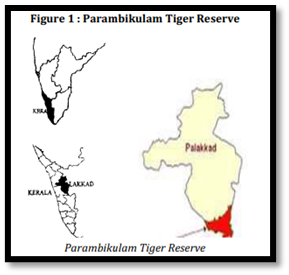
- Steps taken:
-
- Community based ecotourism programs include Tented Niche, Tree top hut, Bamboo Rafting, Fullmoon census, Machan World, Thellikkal nights, Island Nest.
- Tribal people have become part of the Social Tiger Protection Force and are effectively combating forest and wildlife-related offences.
- The tourism is regulated carefully avoiding disturbance to wildlife by banning the entry of private vehicles. Four new vehicles with 18 seats each have been inducted for taking the tourists around the reserve.
- The tribal people have switched over to ginger, coffee, pepper and turmeric cultivation, which are not sought after by wild animals.
- A wide variety of natural products like honey, bee wax, medicinal spices prepared in scientific manner are exchanged through Ecoshops.
- Consequences:
- Ecotourism provides effective economic rewards for conserving and enhancing bio-cultural diversity.
- Eco-tourism contributes to the livelihood of local tribes as these programmes provide a major share of employment to those living in the Reserve, resulted in the reserve becoming the first domestic cattle-free protected forest area.
- Plastic waste has reduced tremendously and remaining waste are recycled and made into key chains embedded with related images and slogans. They are sold as souvenir for the tourists.
- Community intervention in ecotourism has helped to reduce their excessive dependence on forest resources for their livelihood.
- 30-40% more income directly from the ecoshops to the tribals.
Source:
https://www.thehindu.com/news/cities/Coimbatore/community-based-ecotourism-a-success-story/article3369378.ece
http://scstsenvis.nic.in/index2.aspx?slid=2278&sublinkid=1053&langid=1&mid=1
Map
|
Silent Valley National Park
|
|
|
Arittapatti |
|
|
Tungareshwar Wildlife Sanctuary |
|
|
Lothal |
|
|
Ranipur tiger reserve |
|
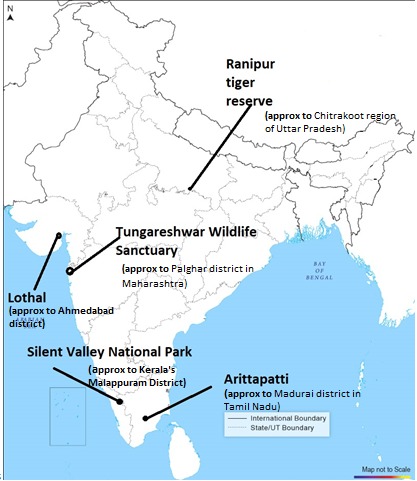
Share the article
Get Latest Updates on Offers, Event dates, and free Mentorship sessions.

Get in touch with our Expert Academic Counsellors 👋
FAQs
Geography Current Affairs focuses on the contemporary issues, events, and developments in the field of geography. It covers recent geographical phenomena, environmental changes, geopolitical shifts, and related news. This differs from regular geography studies which may focus more on foundational concepts, historical contexts, and theoretical frameworks.
Updates are provided regularly to ensure that subscribers stay informed about the latest developments in geography. Typically, updates are provided on a fortnightly basis, depending on the frequency of significant events and changes in the field.
Absolutely. Geography Current Affairs serves as a valuable resource not only for Geography optional but also for GS papers, especially GS Paper 1 (covering Indian Heritage and Culture, History, and Geography of the World and Society) and GS Paper 3 (covering Technology, Economic Development, Biodiversity, Environment, Security, and Disaster Management). It aids in building a holistic understanding of various topics and strengthens answer-writing skills by incorporating contemporary examples and perspectives.
Geography Current Affairs holds immense importance for UPSC preparation, particularly for aspirants opting for Geography optional. It helps candidates stay updated with the latest developments, geographical phenomena, environmental issues, and geopolitical shifts worldwide, aligning them with the dynamic nature of the subject as tested in the UPSC examinations.

